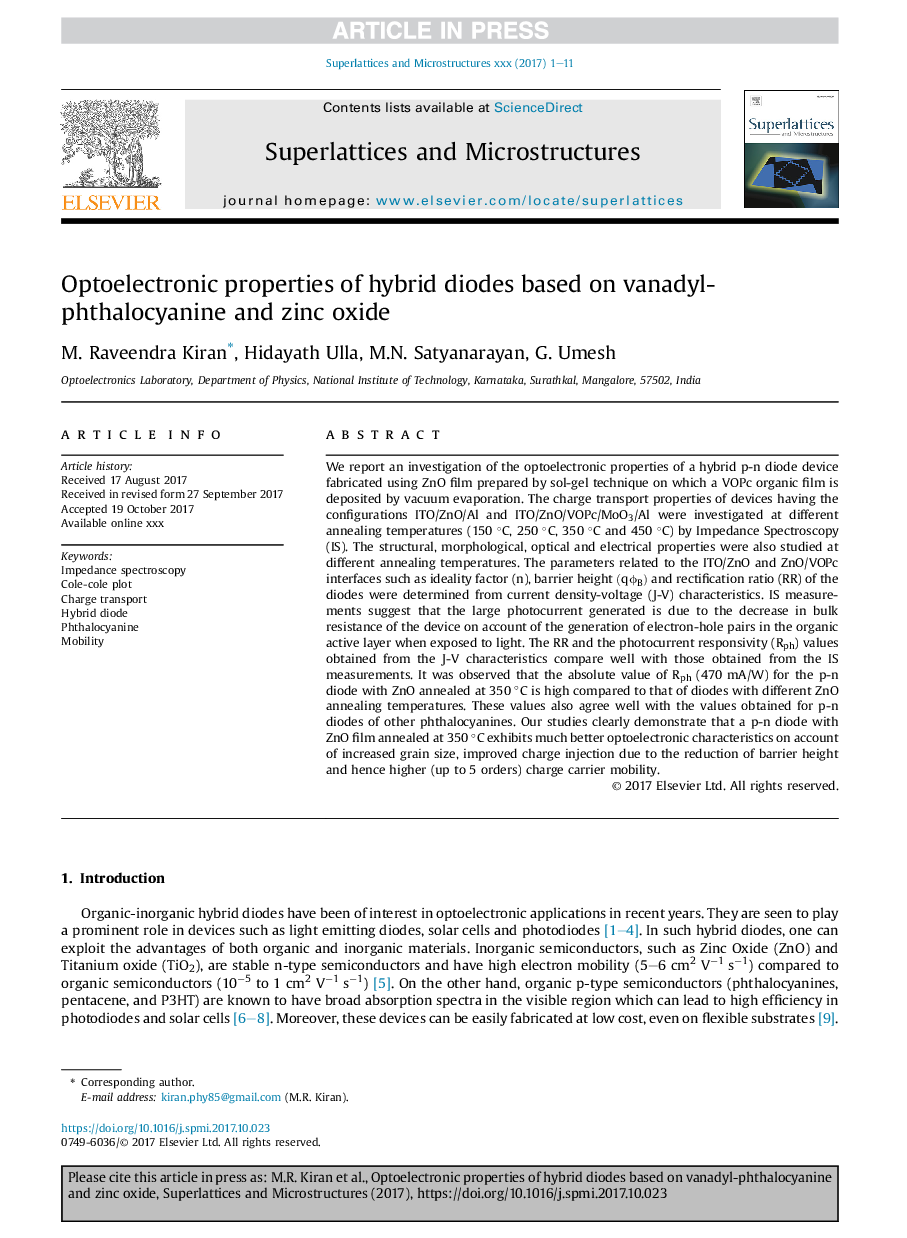| Article ID | Journal | Published Year | Pages | File Type |
|---|---|---|---|---|
| 7939756 | Superlattices and Microstructures | 2017 | 11 Pages |
Abstract
We report an investigation of the optoelectronic properties of a hybrid p-n diode device fabricated using ZnO film prepared by sol-gel technique on which a VOPc organic film is deposited by vacuum evaporation. The charge transport properties of devices having the configurations ITO/ZnO/Al and ITO/ZnO/VOPc/MoO3/Al were investigated at different annealing temperatures (150 °C, 250 °C, 350 °C and 450 °C) by Impedance Spectroscopy (IS). The structural, morphological, optical and electrical properties were also studied at different annealing temperatures. The parameters related to the ITO/ZnO and ZnO/VOPc interfaces such as ideality factor (n), barrier height (qÏB) and rectification ratio (RR) of the diodes were determined from current density-voltage (J-V) characteristics. IS measurements suggest that the large photocurrent generated is due to the decrease in bulk resistance of the device on account of the generation of electron-hole pairs in the organic active layer when exposed to light. The RR and the photocurrent responsivity (Rph) values obtained from the J-V characteristics compare well with those obtained from the IS measurements. It was observed that the absolute value of Rph (470 mA/W) for the p-n diode with ZnO annealed at 350 °C is high compared to that of diodes with different ZnO annealing temperatures. These values also agree well with the values obtained for p-n diodes of other phthalocyanines. Our studies clearly demonstrate that a p-n diode with ZnO film annealed at 350 °C exhibits much better optoelectronic characteristics on account of increased grain size, improved charge injection due to the reduction of barrier height and hence higher (up to 5 orders) charge carrier mobility.
Related Topics
Physical Sciences and Engineering
Materials Science
Electronic, Optical and Magnetic Materials
Authors
M. Raveendra Kiran, Hidayath Ulla, M.N. Satyanarayan, G. Umesh,
